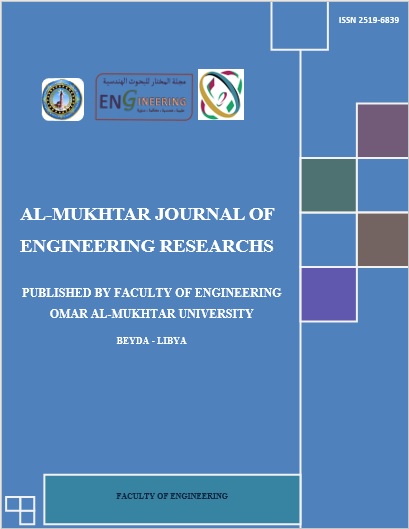Modeling and Experimentation of Monocrystalline Photovoltaic Module Performance with Flat Mirror Reflectors in Elbida Climate Conditions
DOI:
https://doi.org/10.54172/ps3qfk54Keywords:
Photovoltaic, Mirror, Cell temperature, Elbida, Performance, ModelingAbstract
The purpose of this paper is to
give an outline of a method for optimizing solar
panel performance in the presence of solar
tracking mirrors in order to maximize energy
output. Under the climate circumstances of
Elbieda, as well as to examine the primary
influence of cell temperature on the performance
of mono-crystalline modules with a mirror
reflector. For the photovoltaic system with flat
mirror reflectors, a mathematical model has been
developed to predict solar radiation. The
components of solar radiation [global, direct, and
diffuse], geometric factors, and geographical
features of a PV installation are included in the
model. In addition, to calculate the temperature of
the cells. Where meteorological parameters such
as ambient temperature, slope radiation, and wind
speed are used to apply the energy balancing
technique. On a specific day in July, the tests
were carried out. The findings of the modeling
simulation were compared to measurements taken
during two periods, with and without the use of a
reflector. For a traditional PV system and a PV
reflector system, the coefficient of determination
(R2) was 98.7% and 97% , respectively. In both
situations, the mean bias error (MBE) values
were less than 1%. The root means square error
(RMSE) was 26.774% , 36.914% respectively in
both cases. The estimated results were validated
by comparing the results obtained for the
measured slope surface irradiance and the
measured unit cell temperature. The addition of
flat mirror reflectors to successfully listed PV
panels was extremely effective in detecting solar
irradiance, resulting in positive findings of fitted
parameters.
Downloads
Published
Issue
Section
License

This work is licensed under a Creative Commons Attribution-NonCommercial 4.0 International License.
Copyright of the articles Published by Al-Mukhtar Journal of Engineering Research (Mjer) is retained by the author(s), who grant Mjer a license to publish the article. Authors also grant any third party the right to use the article freely as long as its integrity is maintained and its original authors and cite Mjer as the original publisher. Also, they accept the article remains published by the Mjer website (except in the occasion of a retraction of the article).




